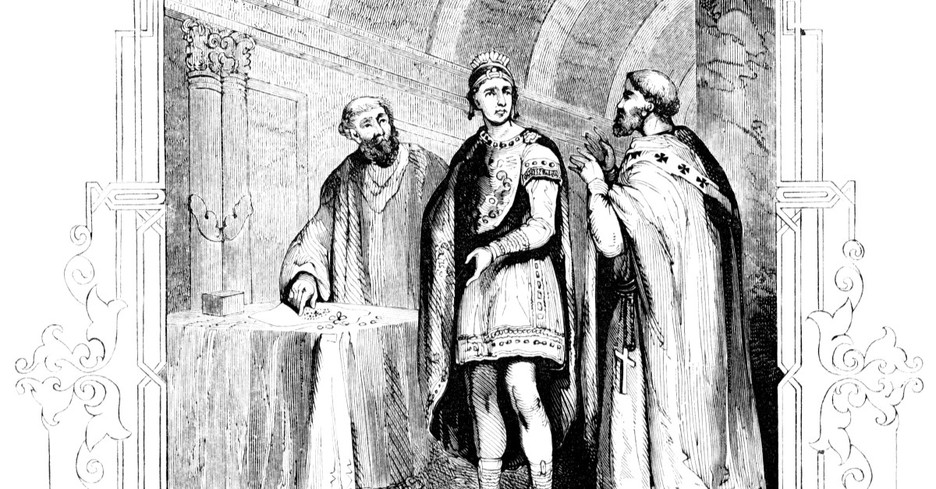
This timeline highlights key events in 6th-century Christian history, including the spread of monasticism, Christianization efforts in Europe, the role of influential figures like St. Benedict, Gregory the Great, and St. Augustine, and the impact of theological controversies.
6th Century Christian History
c. 525-565 AD: Life of Benedict of Nursia
- St. Benedict's Rule for monastic living becomes foundational for Western monasticism.
529 AD: Founding of Monte Cassino
- St. Benedict established the Benedictine monastery at Monte Cassino, a major center for monasticism.
529-534 AD: Closure of Pagan Schools in Athens
- Emperor Justinian I closed the remaining pagan schools in Athens, accelerating the decline of classical paganism.
533-534 AD: Codification of Roman Law
- Justinian's Code of Roman Law is compiled, influencing both secular and ecclesiastical law.
c. 543-604 AD: Life of Gregory of Tours
- Gregory of Tours writes "History of the Franks," providing important insights into Merovingian history and Christian life.
c. 545-600 AD: Life of Columba
- St. Columba, an Irish missionary, established monastic communities in Scotland and contributed to the Christianization of the region.
590-604 AD: Papacy of Pope Gregory I (Gregory the Great)
- Gregory's papacy is marked by efforts to strengthen the papal office and missionary activities.
597 AD: Augustine's Mission to England
- St. Augustine of Canterbury, sent by Pope Gregory I, converted King Æthelberht of Kent and began the Christianization of England.
c. 600 AD: Synod of Whitby
- The Synod of Whitby resolved disputes between Celtic and Roman Christianity in England, leading to the adoption of Roman practices.
c. 603-659 AD: Life of Aidan
- St. Aidan, an Irish missionary, established the monastery of Lindisfarne in Northumbria.
c. 604-631 AD: Life of Isidore of Seville
- Isidore of Seville, a prominent Christian scholar, compiles the "Etymologiae," an influential encyclopedia.
610-632 AD: Life of Muhammad
- The prophet Muhammad began receiving revelations that led to the emergence of Islam, impacting the religious landscape of the region.
c. 590-628 AD: Conversion of Merovingian Kings
- Several Merovingian kings in Gaul converted to Christianity, further solidifying Christianity's presence in Western Europe.
c. 527-565 AD: Life of Justinian I
- Emperor Justinian I's reign included significant church-building projects, codification of law, and theological controversies.
c. 580-662 AD: Life of Maximus the Confessor
- Maximus the Confessor, an influential Christian theologian, plays a key role in theological debates, particularly on Christology.
We are now in the early Middle Ages. Frankly, this, the longest era in Christian history, is the one we find most difficult to grasp and interpret.
It seems such an alien time, yet an amazing and gradual progression paved the way for us to receive the gospel. Then, as now, the pure molten gold of the gospel went forth in crucibles of iron.
At the risk of gross oversimplification, let me suggest ten "M" words to give some overview hooks for the Middle Ages:
-- Migrations of barbarian tribes that reshaped Roman world
-- Missions--often heroic ventures that over seven centuries reached all Europe
-- Monasticism--first a reaction against worldliness, becomes preserver of learning, Scripture and spearhead of missions and education
-- Men of the papacy
-- Manorial culture and economy
-- Mutuality of Church and State
-- Menace of Church divisiveness--quest for truth has never been easy nor always clean
-- Islam which overtook established Christian centers and posed grave threat to Christianity
-- Mentality of accommodation to paganism as "the stream imbibes the color of the soil through which it flows."
-- Mysticism of High Middle Ages
As one who has always had difficulty understanding monks and popes, this by historian Norman Cantor has given me much to think about: The Latin church was preserved from extinction, and European civilization with it, by the two ecclesiastical institutions that alone had the strength and efficiency to withstand the impress of the surrounding barbarism: ...monasticism and the papacy.
The Civilization of the Middle Ages, p. 146 - Ken Curtis
• 529--Responding to growing secularization of the church, Benedict of Nursia establishes monastery of Monte Cassino and the Benedictine Order. Benedict's "Rule" for monks (c. 540) will become the most influential over future centuries.
• 530-532--Boniface II, first pope of Germanic ancestry
• Church and State are becoming more closely intertwined. Emperor Justinian (483-565) closes 1,000-year-old School of Philosophy in Athens 529, issues Code of Civil Laws reflecting Christian morals, sends missionaries as spies to China to smuggle out silkworms, reconquers N. Africa from the Vandals.
• Church buildings become more monumental. Justinian builds Hagia Sophia in Constantinople, dedicated to Christ as the "Holy Wisdom." Constructed 532-537.
• Dionysius Exiquus (d. c. 550), a monk in Rome, establishes modern system of dating, using events after Christ as "Anno Domini," in the year of our Lord. (He missed the date of Christ's birth by a few years.)
• Columba (c. 521-597) goes as missionary to Scotland. Mission headquarters at Iona.
• Conversion of barbarian groups continues. Recared, Visigoth King in Spain and an Arian, becomes Roman Catholic.
• By the end of century the Western church tolerates magic and other manifestations of pagan spirituality as diverse cultures are incorporated into the church.
• Pope Gregory the Great ((c.540-604) gives the mass much of the shape it has today.
Photo: Getty Images/Christine_Kohler








